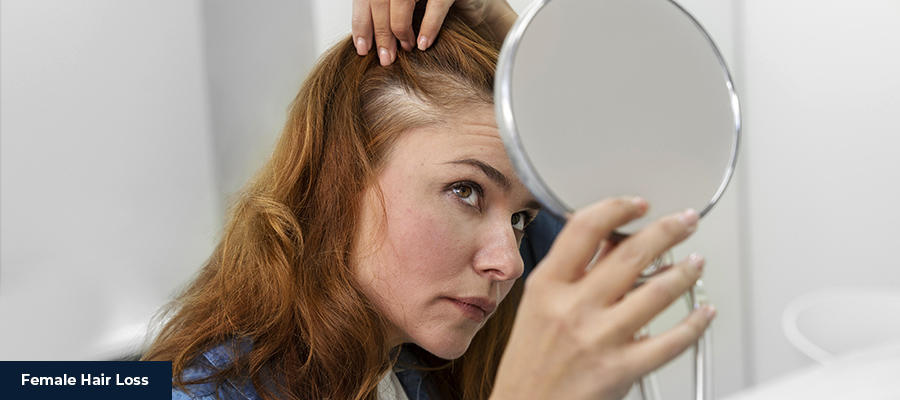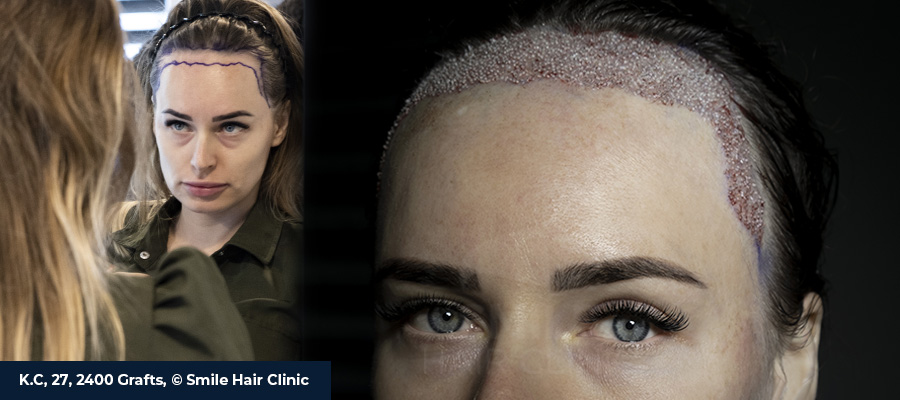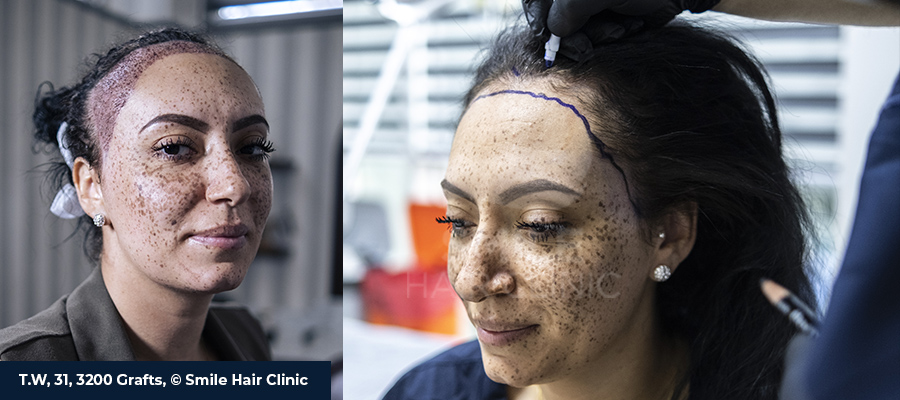Ways To Fight Female Hair Loss

What Causes Female Hair Loss?
Hair loss can be a distressing experience for women, impacting their self-esteem and overall well-being. Fortunately, various strategies and treatment options are available to fight female hair loss. This article explores practical ways to address for best hair loss treatment for female and combat hair loss in women, ranging from lifestyle changes to medical interventions.
-
Identify the Underlying Cause
Understanding the root cause of hair loss is crucial to detect the best hair loss treatment for female. Hair loss in women can be caused by multiple factors, including hormonal imbalances, nutritional deficiencies, genetic predisposition, stress, and certain medical conditions. Consulting with a healthcare professional or dermatologist can help identify the specific cause of hair loss and guide appropriate treatment.
-
Maintain a Healthy Diet
Proper nutrition plays a vital role in maintaining healthy hair. A well-balanced diet with essential vitamins and minerals can help promote hair growth and minimize hair loss. Incorporate foods rich in iron, biotin, zinc, vitamins A and E, and omega-3 fatty acids into your diet. Dietary supplements can be taken under medical guidance to ensure adequate nutrient intake.
-
Manage Stress Levels
Excessive stress can contribute to hair loss. Implementing stress management techniques, such as regular exercise, meditation, deep breathing exercises, and engaging in hobbies or activities that promote relaxation can help reduce stress levels and mitigate hair loss.
-
Avoid Over Styling and Heat Damage
Excessive use of styling tools, such as flat irons, curling irons, and hair dryers, can lead to hair damage and breakage. Limit heat styling tools and use them at a lower heat setting. Additionally, avoid tight hairstyles that pull on the hair, such as ponytails or braids, as they can contribute to hair loss.
-
Gentle Hair Care
Be mindful of how you handle and care for your hair. Use a wide-toothed comb or a brush with soft bristles to prevent unnecessary hair breakage. Avoid vigorous towel-drying or rubbing the hair vigorously when wet. Opt for mild shampoos and conditioners suitable for your hair type and avoid harsh chemicals that may further damage the hair.
-
Hair Loss Treatment For Women
In cases where lifestyle changes are not sufficient, medical interventions can be considered. FDA-approved topical treatments like minoxidil can stimulate hair growth and prevent further loss. Some medications, such as spironolactone or oral contraceptives, may be prescribed to address hormonal imbalances contributing to hair loss. It is crucial to consult with a healthcare professional to determine the most appropriate treatment option based on the individual’s condition.
-
Hair Transplantation
Hair transplantation may be a viable option for severe or advanced cases of female hair loss. During this procedure, healthy hair follicles are transplanted from one area of the scalp to areas with thinning or no hair. Hair transplantation can provide significant and long-lasting results; however, it should be discussed thoroughly with a qualified hair restoration specialist.

Female Pattern Hair Loss
Female pattern hair loss can be a distressing condition, but it can be effectively managed with the right strategies and treatment options. Women can combat hair loss and regain confidence by identifying the underlying cause, maintaining a healthy lifestyle, and considering appropriate medical interventions.
It is essential to consult with healthcare professionals and dermatologists specializing in hair loss to determine the most suitable approach for individual needs. Early intervention is vital in addressing female hair loss and achieving successful outcomes.
Female pattern hair loss, also known as androgenetic alopecia, is a common condition that affects many women worldwide. It is characterized by a gradual thinning of hair in a specific pattern, typically starting at the crown of the head and widening through the center part. Unlike male pattern baldness, female pattern hair loss rarely leads to complete baldness.
However, it can still cause significant emotional distress and impact a woman’s self-esteem. The exact causes of this condition are not fully understood, but hormonal factors, genetics, and age play significant roles. Treatments for female pattern hair loss include topical medications, oral medications, and in some cases, hair transplant procedures. Seeking professional guidance from a dermatologist or trichologist is essential for accurate diagnosis and personalized treatment plans to manage and slow down the progression of this condition.
What Hormone Causes Hair Loss in Females?
The hormone that primarily contributes to hair loss in females is dihydrotestosterone (DHT). DHT is a byproduct of testosterone, which is present in both men and women. Still, it has a more significant impact on male pattern hair loss. In women with female pattern hair loss, the hair follicles become sensitive to DHT, causing them to shrink and produce thinner, shorter hairs.
Over time, the growth cycle of the affected hair follicles becomes shorter, leading to progressive hair thinning. While DHT is an essential hormone involved in female pattern hair loss, it is important to note that other hormonal imbalances and fluctuations, such as those related to menopause or thyroid disorders, can also contribute to hair loss in women. Therefore, a comprehensive evaluation by a healthcare professional is crucial to determine the underlying causes and provide appropriate treatment options.

Instagram: smilehairclinic
 Whatsapp
Whatsapp
